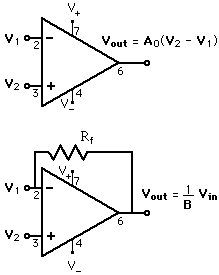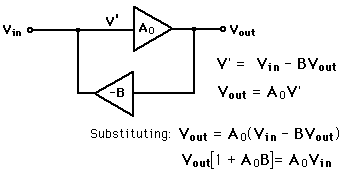Op-Amp Open Loop Gain
 The high open loop gain leads to the voltage rule. |
 |
Practically, the gain is so high that the output will be driven to  for any appreciable difference between  This is useful in the comparator. For practical applications other than the comparator, negative feedback is used to control the device gain. |
Electronics concepts
Op-amp concepts
| HyperPhysics*****Electricity and magnetism | R Nave |


